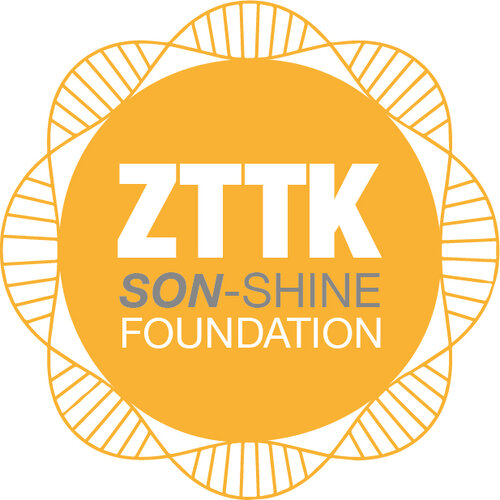What is ZTTK?
What is ZTTK Syndrome?
First, let us skip to the punchline – there are no known cures or treatments for ZTTK today, and we are on a mission to change that.
ZTTK is an ultrarare, monogenic, neurodevelopmental disease
1. Ultrarare
There are only ~65 identified ZTTK patients in the scientific literature. Our foundation has identified 250+ patients.
ZTTK was discovered only in 2016 with broader adoption of whole exome sequencing and whole genome sequencing (WES/WGS)
Unlike some ultrarare diseases that are named after their gene, ZTTK was named after 4 scientists who shared credit for the discovery of the disease
Currently, ZTTK diagnosis requires a WES/WGS test. Access to these tests continues to be limited outside of large cities with major academic health centers and there are likely many undiagnosed cases.
By one estimate, there are ~1,200 live births with ZTTK each year – there are likely many people with ZTTK who are undiagnosed and may not be getting access to important medical care and therapy services.
2. Monogenic:
A mutation on a single gene (the SON gene) on human chromosome 21, the same chromosome as Down Syndrome.
3. Neurodevelopmental
The “neuro” part indicates that it impacts the central nervous system (CNS), which includes the brain and spinal cord.
The “developmental” indicates that this disease has infant onset.
More research is needed to determine the potential effects of ZTTK on lifespan and whether developmental regression may be a feature of ZTTK.
What are the ZTTK Symptoms?
ZTTK has a very broad phenotype, which means that it affects people in many different ways. The following common features were identified in a study of 52 patients by Dingemans et al. The percentages demonstrate how many patients in the study had each symptom.
Intellectual disability: Mild to severe intellectual disability – 100%
Speech delay: Delayed speech development and in some cases nonverbal – 100%
Motor delay: Delayed or inability to crawl, walk, or move independently – 96%
Facial morphology: We do not yet know if there is a common face phenotype, like Down syndrome has – 95%
Hypotonia: Medical term for low muscle tone or muscle weakness that can cause a person to feel floppy – 70%
Feeding difficulties: Difficulties may include difficulty keeping food down, inability to independently feed themselves, etc. – 64%
Epilepsy: Seizures can emerge early in childhood at any time – 50%
Further, ZTTK is also quite random and multisystemic. Patients may be seen by 10+ specialists with symptoms ranging from autism (13%) to cleft palate (2%)
Because the known population is so small, this information comes with important caveats:
This information comes from the most comprehensive ZTTK study available, but with only 52 participants, its findings may not be representative of the entire ZTTK community. Click here to help us obtain more complete and inclusive data.
All of this information is based on what we know today. As access to diagnosis continues to improve, milder cases may be discovered and shift our understanding of how common different symptoms are.
Please note that the data show on this page is for truncating variants of ZTTK only (frameshift, nonsense, deletions) and excludes missense variants. This is because preliminary data supports a hypothesis that missense patients who have been identified so far have a milder phenotype than truncating patients, which has also been observed in other rare neuro diseases (see below more further explanation).
Where can I learn more about ZTTK Symptoms?
In the most comprehensive study of ZTTK’s phenotypic spectrum to-date by Dingemans et al., 52 ZTTK patients’ symptoms and genetic mutations were aggregated
Since this study, our patient advocacy group has made contact with several new cases diagnosed with missense variants all of whom exhibit higher functioning than is typical of patients with truncating variants.
We continue to explore whether our hypothesis that missense patients have a milder phenotype than truncating patients, and would love to speak directly with any missense patients/caregivers. If you are interested in chatting, please email Ada Lio, Executive Director, at alio@zttk.org
What causes ZTTK syndrome at a molecular level?
ZTTK syndrome is caused by heterozygous, loss-of-function mutations in the SON gene:
Heterozygous: Every human has two copies of the SON gene. Different genes require different expression levels for healthy biology. In SON’s case, it’s critical to have two working copies. Patients with ZTTK have only one working copy of the gene, and the broken copy is producing nonsense. ZTTK can thus be described as a “haploinsufficiency” – meaning there’s not enough by half
Loss of function: Genetic mutations typically result in too much or too little of something. In this case, the broken copy produces nonsense mRNA which is destroyed before turning into a protein through a cellular process called “nonsense mediated decay.” Thus, there is not enough SON gene, and luckily there are no toxic byproducts being created, to our knowledge. In addition, loss of function could occur if the partial or the entire SON gene is deleted from one copy.
In the diagram, each point represents a patient whose mutation is documented in the scientific literature and where it sits in both the patients’ SON gene and SON protein.
There are many observed mutations on the very large exon 3
There is a spike of mutations where ~25% of the observed population shares the same mutation (a 4 base-pair deletion), likely suggesting a weak site
Besides that, most mutations have only a single observation to-date
Participate in the ZTTK Data Collection Program!
It is critical for ZTTK patients and caregivers to contribute data to both our Rare-X patient registry and Citizen Health natural history datasets so we can build our understanding of the disease.
Questions? Contact Ada Lio alio@zttk.org




